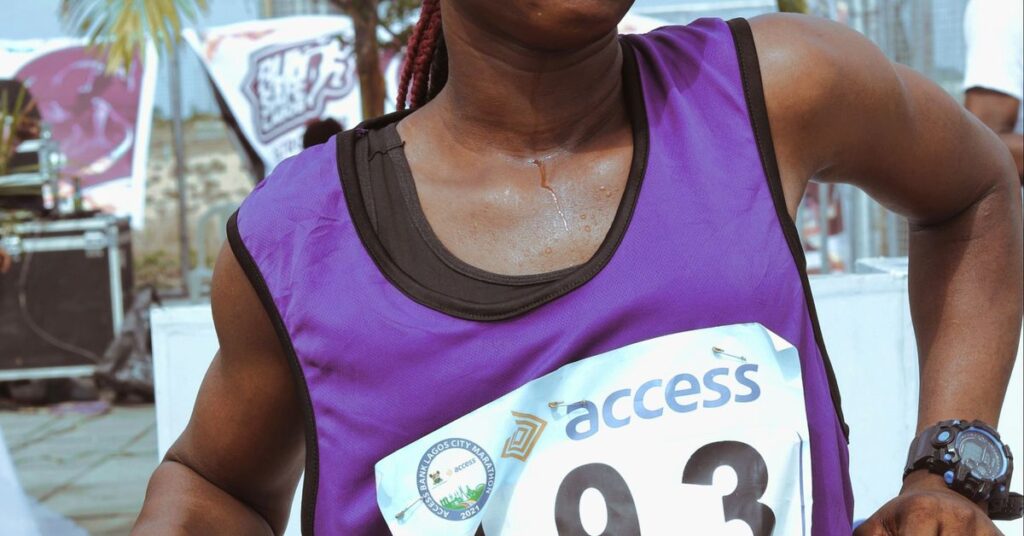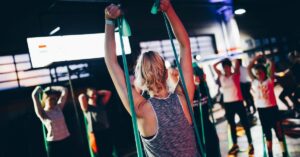Mastering Recovery: Proven Techniques for Enhanced Mobility and Injury Prevention

Mastering Recovery: Proven Techniques for Enhanced Mobility and Injury Prevention
In the fast-paced world of sports and fitness, recovery often takes a backseat to training intensity. But let’s be honest—if you think you can sprint your way to success without giving your body the TLC it craves, you’re in for a rude awakening. I remember one athlete, a sprinter with dreams of Olympic gold, who pushed through pain, thinking it was just a part of the process. Spoiler alert: it wasn’t. He ended up sidelined for months, all because he neglected the fundamental pillar of athletic performance: recovery.
So, why is recovery so crucial? Well, it’s simple. Recovery not only enhances mobility but also plays a pivotal role in injury prevention. In this article, we’ll delve into proven techniques that can help you master recovery, boost your performance, and keep those pesky injuries at bay. Strap in; this is going to be a comprehensive ride!
The Science Behind Recovery
Before we dive into the nitty-gritty, let’s take a moment to understand what happens to our bodies during recovery. When we train, we cause micro-tears in our muscles. This is a natural part of building strength, but without recovery, these tears don’t heal properly. Think of it like trying to build a house without letting the cement set—eventually, it’s going to crumble.
Research shows that effective recovery can lead to:
- Improved muscle repair
- Enhanced range of motion
- Reduced risk of injury
- Better overall performance
Numerous studies (and a fair share of anecdotal evidence) suggest that athletes who prioritize recovery not only perform better but also enjoy their sport more. It struck me that this is often overlooked in the quest for gains. So, how do we go about mastering recovery?
Active Recovery: The Gentle Way Forward
Active recovery is a technique that involves low-intensity exercise following a more intense workout. It’s like giving your body a gentle nudge instead of a shove. Instead of plopping on the couch after a grueling session, consider engaging in activities like light jogging, swimming, or even yoga. These activities can help maintain blood flow, which aids healing.
One study published in the Journal of Sports Sciences found that participants who engaged in active recovery reported less muscle soreness and improved subsequent performance compared to those who rested completely. I can personally attest to the benefits of yoga after a heavy lifting session. The stretches and poses not only release tight muscles but also reset my mental state—think of it as a mini-vacation for your body.
Stretching: The Unsung Hero of Mobility
Stretching is often relegated to the realm of “optional” in workout routines, but it’s time to change that narrative. Regular stretching improves flexibility, which is crucial for mobility and injury prevention. Whether you’re a weekend warrior or a seasoned pro, incorporating a variety of stretches into your routine can pay dividends.
Dynamic stretching before workouts (think leg swings and arm circles) prepares your muscles for action, while static stretching post-workout helps cool down and elongate those overworked muscles. A balanced approach to stretching can enhance your range of motion and reduce the likelihood of injuries.
Foam Rolling: Your Personal Massager
Ah, foam rolling—the self-care technique that feels like a mix between bliss and agony. If you’ve ever spent time rolling out your muscles, you know what I mean. Foam rolling is a form of self-myofascial release that helps alleviate muscle tightness, improve blood circulation, and enhance mobility. It’s like having a personal masseuse, only less awkward and much cheaper.
According to experts, foam rolling can reduce muscle soreness and even improve performance in subsequent workouts. It’s especially effective for athletes who have a repetitive motion in their sport. For instance, I used to roll out my quads after every run, and I swear it felt like a mini miracle. Remember to roll slowly and breathe through the discomfort—it’s all part of the process.
Nutrition: Fueling Recovery
What you eat plays a critical role in your recovery process. Nutrients from food are essential for muscle repair and replenishing energy stores. Think of your body as a high-performance engine; without the right fuel, it’s not going to run smoothly.
A well-balanced diet rich in protein, healthy fats, and carbohydrates can help speed up recovery. Some key nutrients to focus on include:
- Protein: Essential for muscle repair. Look to lean meats, dairy, or plant-based sources like beans and lentils.
- Antioxidants: Found in fruits and vegetables, they help combat oxidative stress caused by intense workouts.
- Omega-3 fatty acids: These can reduce inflammation and are commonly found in fatty fish like salmon.
And let’s not forget hydration! Staying properly hydrated helps transport nutrients and flush out toxins. I once learned the hard way that skipping water is a rookie mistake—my legs felt like lead after a long run, and I could barely move the next day. Lesson learned!
Sleep: The Ultimate Recovery Tool
Let’s talk about sleep, shall we? It’s often the first thing we sacrifice on the altar of productivity, but in reality, sleep is a powerhouse when it comes to recovery. During sleep, your body goes into repair mode—muscles rebuild, tissues regenerate, and hormones balance out. Studies show that athletes who prioritize sleep report better performance and lower injury rates.
So, how much sleep do you need? Well, it varies, but most adults require around 7-9 hours per night. If you’re training hard, aim for the higher end of that range. I’ve found that a consistent sleep schedule works wonders; it’s like setting your body’s internal clock to “performance mode.” Consider winding down with a book (no screens, please!) to signal to your body that it’s time to rest.
Mindfulness and Mental Recovery
Let’s not forget the mental aspect of recovery. The mind-body connection is real, and stress can take a toll on your physical health. Engaging in mindfulness practices, such as meditation or deep-breathing exercises, can help alleviate stress and promote a sense of calm. I remember trying a mindfulness app during a particularly stressful training cycle, and it changed my outlook entirely. Just a few minutes of focused breathing made a world of difference.
Moreover, mental recovery is crucial for athletes who often push through physical pain. By incorporating mental relaxation techniques into your routine, you can enhance focus, motivation, and overall performance. It’s like giving your brain a spa day!
Injury Prevention: The Proactive Approach
Now that we’ve covered the essentials of recovery, let’s pivot to injury prevention. The old adage “an ounce of prevention is worth a pound of cure” rings especially true in the world of athletics. Here are some proactive strategies to keep injuries at bay:
- Warm-Up: Always start with a proper warm-up before any workout. This prepares your muscles and reduces the risk of strains.
- Listen to Your Body: If something doesn’t feel right, don’t ignore it. It’s easy to brush off discomfort, but it’s often a signal from your body that something needs attention.
- Cross-Training: Engaging in various forms of exercise can help prevent overuse injuries. Mixing it up keeps your workouts fresh and your body balanced.
- Strength Training: Building strength in supporting muscles can help stabilize joints and prevent injuries. Think of it as reinforcing the foundation of a house.
Remember, being proactive about your training and recovery can mean the difference between flourishing in your sport and going home with an ice pack. I’ve seen countless athletes sidelined by avoidable injuries, and it always pains me to see their hard work go to waste.
Finding What Works for You
Ultimately, recovery isn’t a one-size-fits-all approach. What works wonders for one athlete might not resonate with another. It’s important to experiment and find the right techniques that suit your needs and lifestyle. It’s like dating—sometimes you have to kiss a few frogs before you find your prince (or princess) of recovery methods.
Consider keeping a recovery journal to track which techniques yield the best results for you. Document your workouts, recovery practices, sleep patterns, and how you feel overall. Over time, you’ll discover a rhythm that aligns with your body’s unique needs.
Conclusion: Recovery as a Lifestyle
In conclusion, mastering recovery is not just about the occasional foam roll or a well-timed nap. It’s about embracing recovery as a vital part of your athletic journey. By incorporating active recovery, proper nutrition, hydration, sleep, and mindfulness into your routine, you’ll not only enhance your mobility but also prevent injuries that can sideline your progress.
So, the next time you’re tempted to skip your cooldown or forgo that post-workout snack, think about your long-term goals. Recovery is not just a phase; it’s a lifestyle. As the saying goes, “You don’t have to be great to start, but you have to start to be great.” And trust me, your future self (and those muscles) will thank you!






